How to water an orchid in winter?
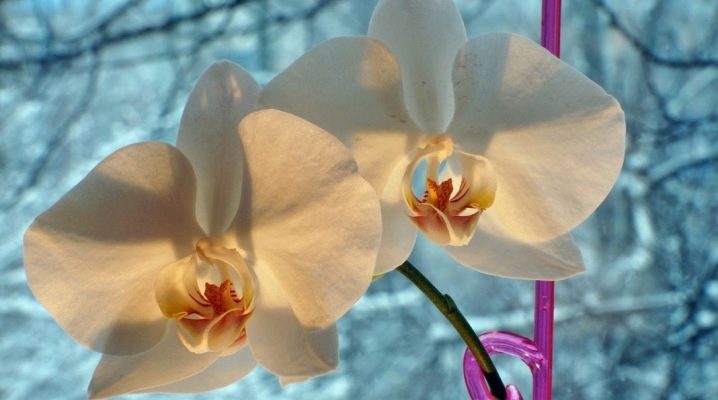
Orchids are very beautiful, but whimsical plants that need to be well looked after, especially in autumn and winter. It is important to water the flower correctly, to moisten the soil well. If you do not follow the watering rules, you can destroy the orchid. It is worth considering some recommendations that will help growers maintain the health of their favorites.
Peculiarities
These flowers are thermophilic. In winter, they need special care, which is slightly different from caring for a plant in summer and spring. Indoor flowers have their own characteristics, so before purchasing them, you should familiarize yourself with how to properly maintain them. Otherwise, orchids may stop blooming, and sometimes even die.
Plants that grow in the wild adapt to climate conditions and are able to withstand temperature extremes. They grow and develop well, even if the temperature drops or rises sharply. Domestic plants cannot maintain their health in the cold, they are not adapted to it. That is why special conditions should be created in winter.
It is important to ensure that the room has a high temperature and acceptable humidity.
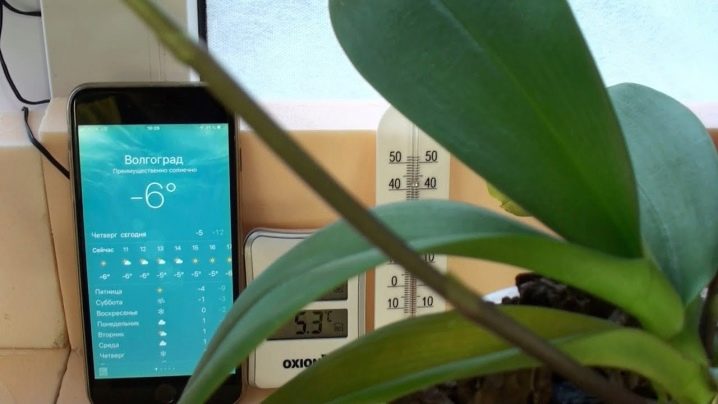
It should be remembered that you can not place the plant on the windowsill after watering... It is also important to monitor soil conditions and moisture levels. Excess liquid will drain into the trays under the pot. As a result, water will accumulate there.
Most often in winter, the window sill is cold, which means that the temperature of the liquid will be reduced. If the flower absorbs cold water, its roots will freeze, which can lead to a variety of diseases and bacteria. To get rid of this problem, you should install the orchid pots on foam plastic - it will not cool down, and the water will remain at room temperature.
You can place the pot in a planter made of wood, metal, ceramic or plastic. This will protect the root system of the plant from hypothermia.
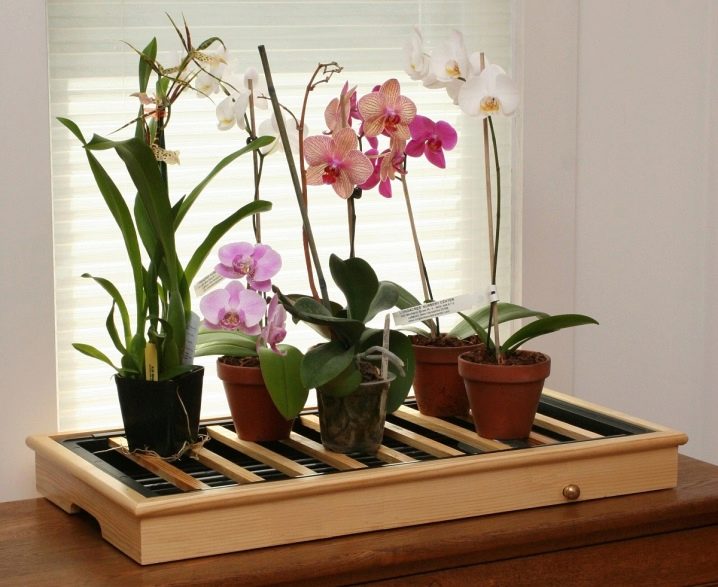
How often is it needed?
In summer and spring, it is necessary to water the orchid more often than in winter. If the day is hot, the grower can water the flower several times a week. In winter, it should be watered once every 10-14 days.... Mostly in the cold season, orchids are dormant. The flower is passive, there is no flowering, there are no new leaf plates, a small amount of energy is wasted. In this regard, the orchid eats less often than during active periods.
Some species and varieties do not have a pronounced dormant period. They can grow, form new leaf plates, and bloom in winter. Even such plants should not be watered too often.
If the flower blooms in winter, you need to water it once every 7 days.
How to water properly?
Winter watering at home should be done with a certain amount of water. Best suited for rain or melt... If such a liquid is not available, you can use boiled water, which stood for a while. It is important that there is a lot of oxygen in it. Especially this should be monitored if you need to water a blooming orchid. In order for the water to have a large amount of oxygen, it is necessary to pour it from one container to another 2-3 times.
During flowering, the plant should be watered very carefully so as not to crush the flowers.For this, watering cans are used. The liquid pressure should not be too strong, flow up the soil. It is impossible to touch the sinuses of the leaf plates and the growth points of the flower... You need to stop watering when water begins to flow from the bottom of the pot, where there are special holes. After 2-3 minutes, you need to resume watering. The leaked water should not be used a second time; it should be discarded.
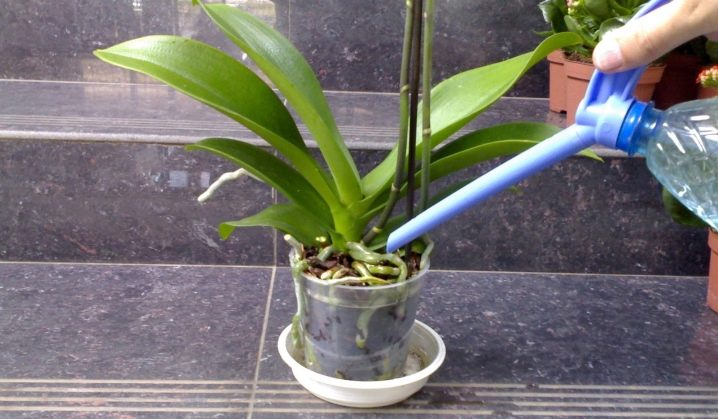
In winter, the humidity in the rooms will be no more than 35%. This is the fault of the heaters, which make the air dry. As a result, various parasites appear and multiply, for example, spider mites.
To keep the flower safe, you need to ensure that the humidity level is normal.
You need to purchase a special humidifier, which will help maintain an optimal level of humidity and will be useful not only for plants, but also for people living in the house.
There are several other ways to water a plant.
- Immersion. The pot containing the flower should be placed in a bowl of clean liquid. Then you need to wait until the soil is saturated with it, after which the pot is carefully pulled out. The flower grower needs to hold it in weight so that excess water can drain off. This method is optimal for plants that are placed in decorative baskets.
- Bathing... This method is also quite simple and effective. It is performed several times a month. You should prepare clean and warm water, the temperature of which will be 20 degrees. The pot in which the plant is located is wrapped in a regular polyethylene bag, and the planting soil is watered with liquid from a tap. Then the orchid is dried and the bag is removed. This method effectively fights against the emergence of pathogenic microorganisms, with the accumulation of dirt, dust and fungal spores.
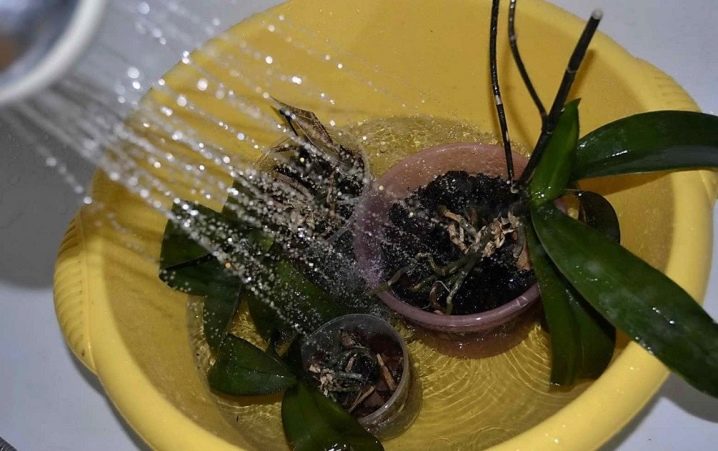
Post-transplant care
Transplanting is stressful for orchids, so you should leave the flower alone for a few days, you should not water it immediately. But if the soil is dry, you need to fluff it up a little and spray it with a spray bottle. After the plant has fallen into another container, the substrate is moistened. This allows you to provide moisture to the root system. The pot is placed in a bowl of warm liquid for half an hour.
It will be better if the florist combines watering the plant with its fertilizer.... So the orchid will take root faster. Then the flower is dried and placed on a windowsill (on a stand). Some people think that it is necessary to saturate the substrate with a not too strong solution of potassium permanganate. This will help disinfect the soil and rid it of a variety of parasites. It should be processed by immersion.
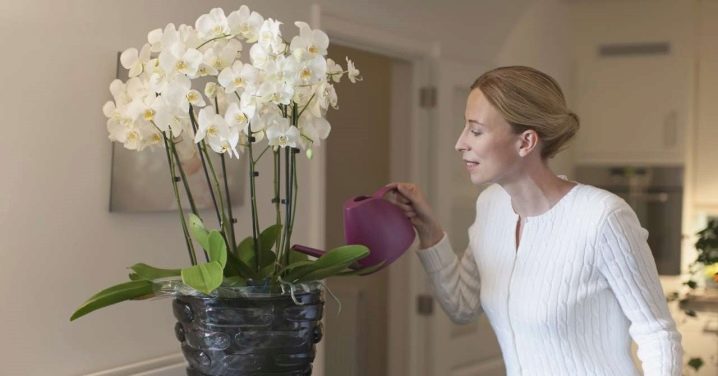
Possible difficulties
Excess moisture is the most common problem. Orchids do not like cold, and the liquid in the pot can cause hypothermia of the root system. Further decay will occur and various diseases caused by fungi will appear. To prevent this from happening, you need to ensure that the water can drain after watering, and promptly remove it from the pan or saucer.
It is also worth taking care of the thermal insulation of the plant. It should be located in a warm place, and not on a windowsill.
Good lighting is also important. If there is nowhere to put the flower, it is worth blocking it from the draft.
Some people think that growing such a plant is a very difficult job that not everyone can handle. But in order for the flower to be healthy and strong, you just need to be guided by not too difficult, but important rules. The main thing is to treat the orchid carefully and monitor its needs. If you do everything right, the flower will certainly delight its owner with lush and beautiful flowers, as well as a large number of children.
































The comment was sent successfully.